
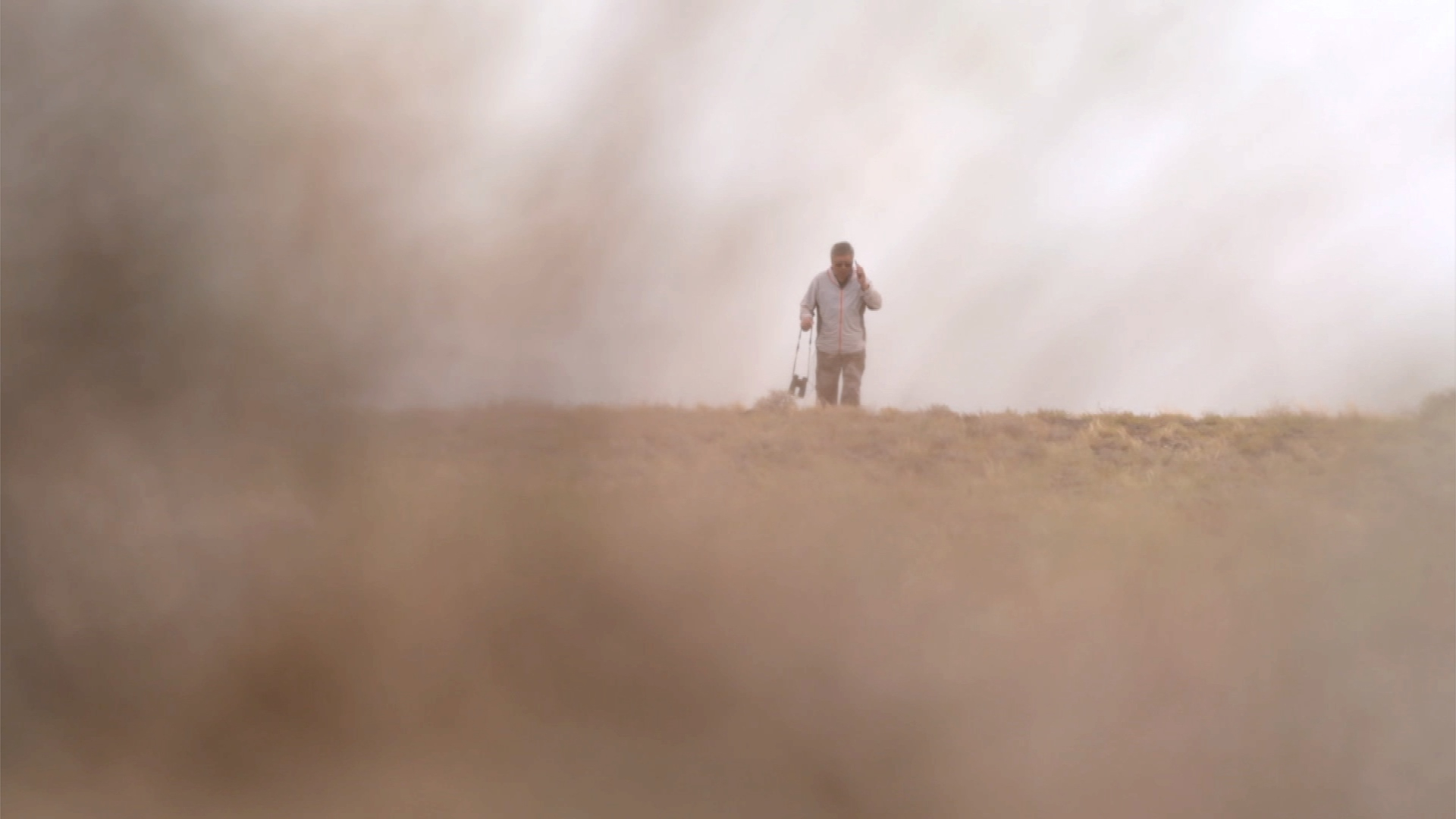
The Kalamaili Ungulate Nature Reserve occupies part of the arid steppes of westernmost Chinese region Xinjiang Uygur Autonomous Region. The sparsely-vegetated area is home to more than a dozen rare wild animal species, including the endangered Przewalski’s horse, Mongolian wild ass, goitered gazelle and argali.
Near the reserve’s northern border, there is a row of empty builders’ trucks. They were brought in to help in the construction of a new highway a few kilometers inside the reserve.
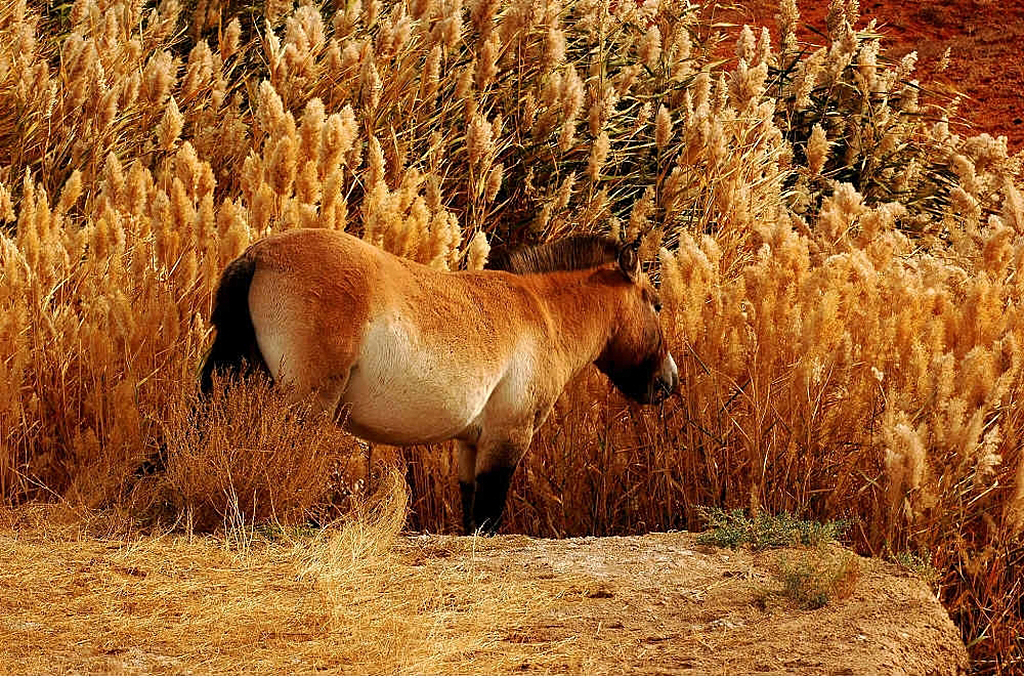
A Przewalski’s horse at the Kalamaili Ungulate Nature Reserve in Xinjiang Uygur Autonomous Region, northwest China. /VCG Photo
Chu Hongjun, director of the reserve, regularly visits the construction site to check on progress. He is particularly interested in an elevated section of the highway, a special design for an unimpeded regular migration for the local wildlife.
Chu is pleased with the progress. “Well done,” he tells the engineers. “You’ll be remembered even when you get old as you helped build this bridge,” said Chu. In fact, he is unhappy with the situation, and adds ruefully, “but for us, this is destroying our wildlife habitat.”
Not far away, there is a railway under construction, which also incorporates a migration channel. But Chu, a wildlife conservation expert, worries that the desert ungulates will be reluctant to use either of the passageways. And if they don’t, Chu believes there may be a long-term threat to their survival, since groups “may be isolated geographically, with no chance of genetic exchange”.
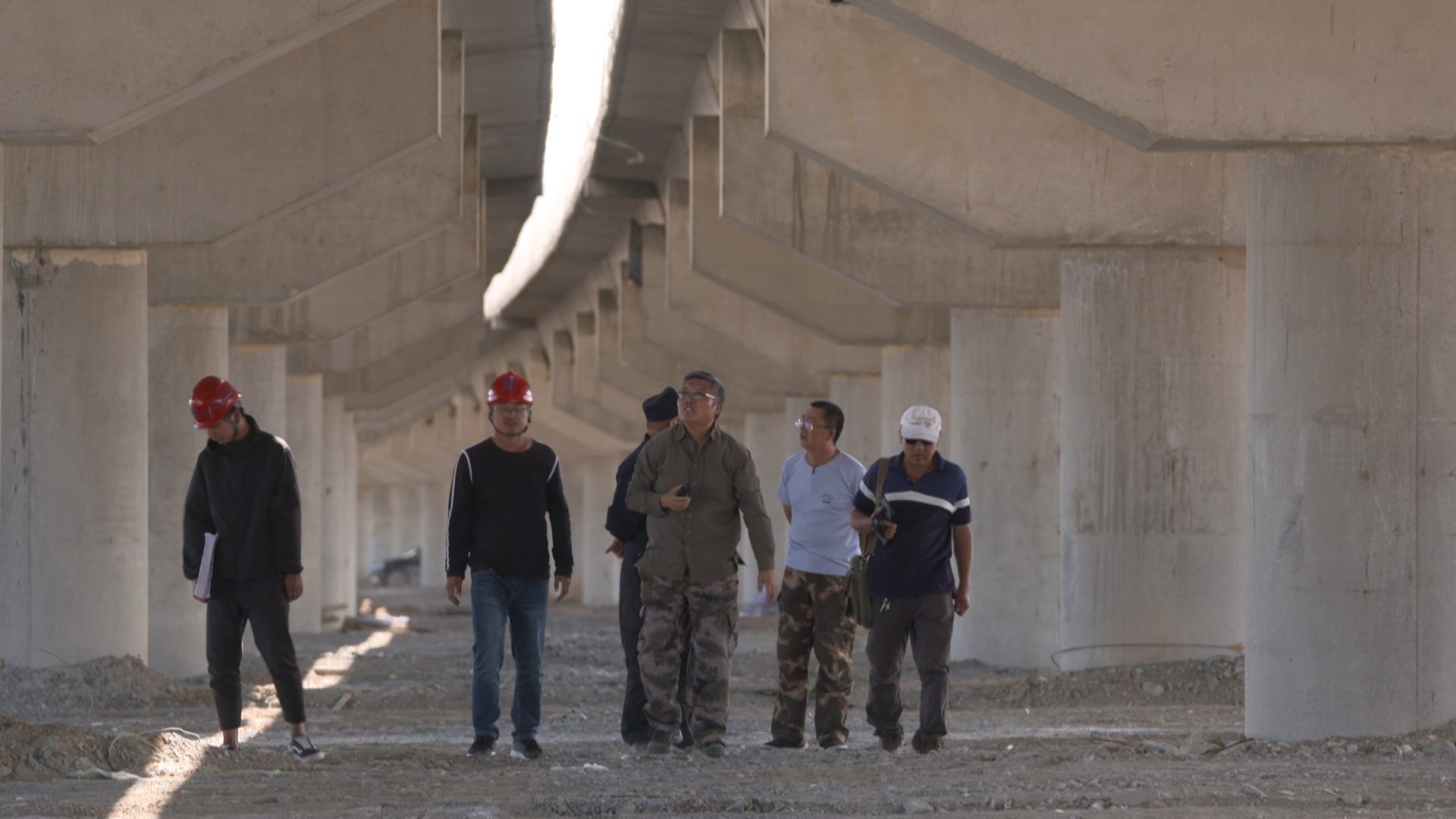
Chu Hongjun checks the construction of a migration channel under a highway under construction in Xinjiang Uygur Autonomous Region, northwest China. /Photo by CGTN's Ning Nan
This is not the first time the 18,000-square-kilometer reserve, established in 1982, has been the focus of development. The National Highway 216, completed in the early 1990s, cuts across the reserve’s heart from north to south. Back then, no migration channel was included in the plans. Przewalski’s horses, reintroduced to Kalamaili at a time when they were only just recovering from near extinction, were regularly struck by passing vehicles when crossing the road. Chu and his team had to relocate the horses’ breeding center farther away from the traffic.
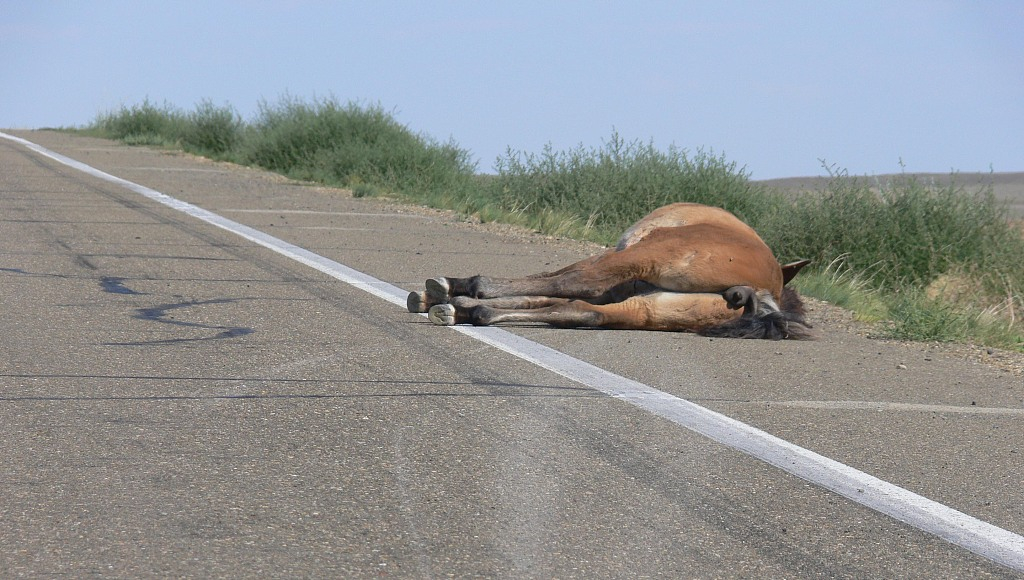
A Przewalski’s horse that was killed by vehicles on a highway in Xinjiang Uygur Autonomous Region, northwest China. /VCG Photo
The reserve has also suffered from the mining industry. Kalamaili has abundant coal, oil and gold, and in the interests of maximizing the exploitation of these and other resources, the reserve has been reduced in size five times, losing almost a third of its area. In July 2015, however, a national environmental inspection team called off a planned sixth downsizing. And Chu Hongjun was subsequently appointed to head reforms aimed at protecting the wildlife in the reserve.
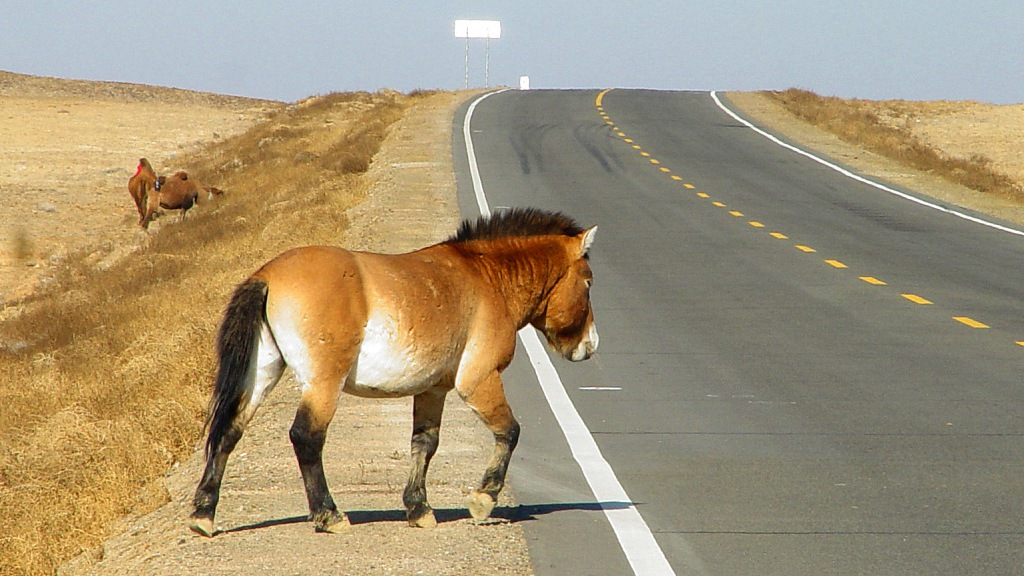
A Przewalski’s horse is crossing a highway in Xinjiang Uygur Autonomous Region, northwest China. /VCG Photo
Under the reforms he has overseen, environmentally-harmful enterprises operating in the reserve were shut down. Chu said in August last year that apart from a few oil fields, almost all the illegal operations had been halted and the companies had moved out.
“I must have offended many people when carrying out the reform,” says Chu. “But we can’t compromise, because we’re at the last defense.”
Born in Shandong Province in eastern China, Chu Hongjun left for Xinjiang in 1990 and had been devoted to wildlife conservation in the region ever since. Now 52, he expects to spend the rest of his working life overseeing the reforms – up until, hopefully, their completion.
“That would be my biggest relief,” he says.
(Cover image via VCG.)
(If you want to contribute and have specific expertise, please contact us at nature@cgtn.com)

Copyright © 2018 CGTN. Beijing ICP prepared NO.16065310-3
Copyright © 2018 CGTN. Beijing ICP prepared NO.16065310-3